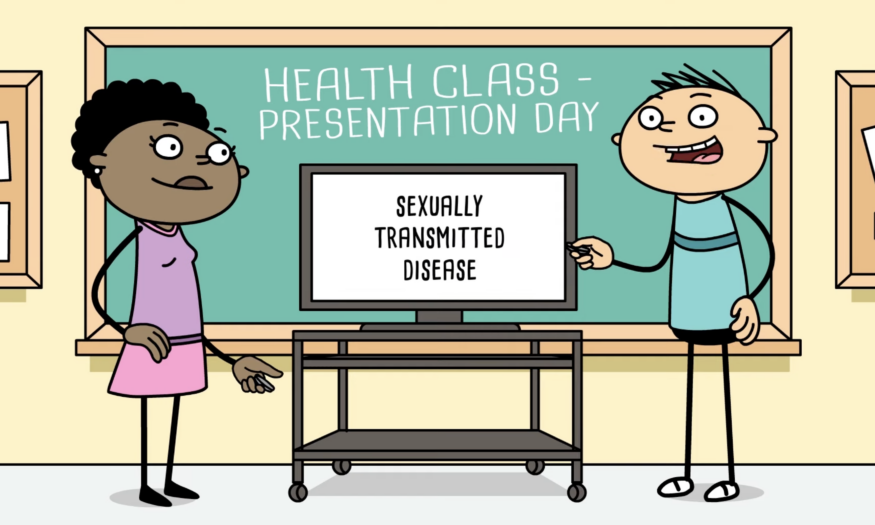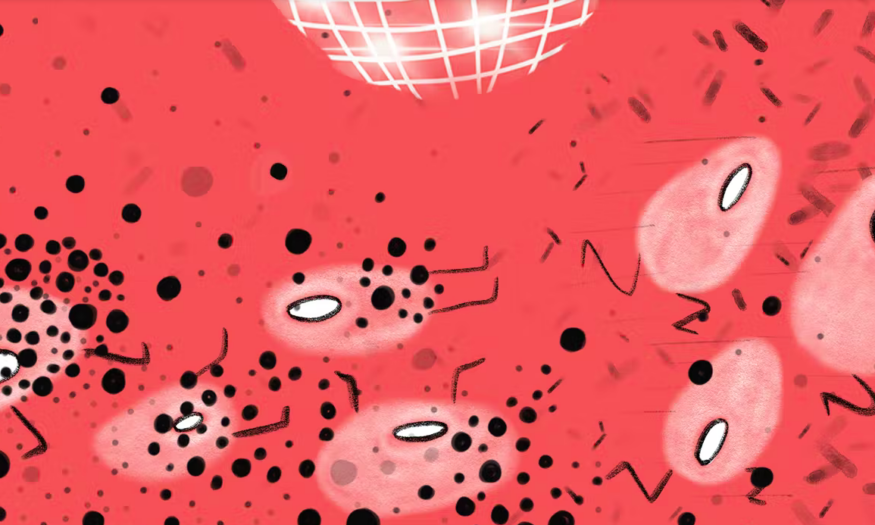Treating Vaginal Dryness in Menopause
 sk/Unsplash
sk/Unsplash
-
Topics Include:
Estrogen
Lubricant
Menopause
Perimenopause
UTI (Urniary Tract Infection)
Vagina
Vaginal Sex
Vulva
Edited by Our Bodies Ourselves Today Sexuality Content Experts, July 2022
This content is adapted from an earlier article by Our Bodies Ourselves Anatomy & Menstruation Contributors.
Vaginal dryness is a very common in the time leading up to and after menopause. Fortunately, there are things you can do that can bring relief. This article offers some options for improving how you feel. Vaginal dryness is also common at other times of life, and some of the treatments offered here may help those who have vaginal dryness that is not caused by menopause.
One of the most common causes of vaginal dryness is the hormone fluctuations associated with the menopause transition. As estrogen and progesterone levels decline, vaginal walls become thinner, drier, less flexible, and more prone to tears and cracks.
The hormonal shifts of perimenopause may also result in less lubrication being produced, so it can take longer to become wet during sexual activity. Penetration may be uncomfortable or painful and can lead to irritation. If the tissue of the vaginal walls become very delicate, friction from sexual activity may even cause bleeding.
If you have thinning and inflammation of the vaginal walls—which clinicians may refer to as vaginal atrophy, atrophic vaginitis, or VVA (vulvovaginal atrophy)—you may understandably end up avoiding sexual activity, especially penetrative sex.
Forget intercourse! After menopause, I couldn’t even ride my bicycle anymore—my vagina always felt sore.
Often, menopause-related vaginal dryness is part of a set of syndromes known as urogenital atrophy. If you have urogenital atrophy, it may make sense to treat your symptoms as a whole, rather than focusing on each separately. Urogenital atrophy is so common because during and after menopause the genitals and urinary tract become more vulnerable to irritation from yeast, fungal, and urinary tract infections (UTIs), due to a change in pH from the loss of systemic estrogen.
Symptoms of urogenital atrophy typically include:
- Vulvovaginal pain, soreness, discomfort, with or without sexual contact
- Painful vaginal penetration
- Recurring urinary tract infections (UTIs)
- Urinary incontinence (involuntarily peeing before you can get to the toilet)
There are treatments to manage and reverse urogenital atrophy, so you don’t have to suffer in silence like most people with these symptoms. If you feel pain during urination that doesn’t go away within 24 hours, if you have blood in your urine or unusual discharge, or your genitals are itchy or look inflamed, you should see your healthcare provider as soon as possible to rule out an infection. In the meantime, follow the self-care regimen for UTIs, including drinking plenty of liquids, and avoiding scratching to protect the irritated tissues.
Every Body Is Different
Vaginal dryness during sexual activity does not necessarily mean anything is wrong. Different bodies make different amounts of lubrication. You may simply need more time or more stimulation to become wet enough for vaginal penetration to feel good. Experiment with different types of touch and stimulation to discover what feels best and is most arousing to your body.
On the other hand, there are a variety of conditions unrelated to menopause, including vulvodynia, that can cause vulvovaginal pain and irritation, with or without insertive sex. A skilled health care provider is essential to sorting out what’s going on and helping identify the best approaches to treatment and prevention.
Medications and Over-the-Counter Products Can Cause, or Worsen, Vaginal Dryness
While natural hormonal changes are the main culprit causing menopause-related vaginal dryness, some prescription and over-the-counter drugs can also cause or contribute to vaginal dryness. For instance, medications known as an anticholinergic (meaning they act on the neurotransmitter acetylcholine) can cause dryness because they reduce mucus production. Many of these drugs are used as treatment for respiratory conditions. But they are also prescribed for overactive bladder, and urinary incontinence! People with urogenital syndrome will especially want to steer clear of these. Antihistamines, such as Benadryl, can have a similar effect, causing dry vaginal tissue as well as nose and eye tissues.
Douches, sprays, and colored or perfumed toilet paper and soaps can also irritate vulvovaginal tissues, contributing to dryness. Just because these products are sold over the counter and in major stores does not mean they are safe or good for your vulva or vagina. Similarly, products advertised as “natural,” “herbal,” or “bioavailable” are not guaranteed to be safe.
Treatment and Prevention
Evidence-based treatments for vulvovaginal dryness include vaginal lubricants and moisturizers, topical estrogen, topical anesthetics, and Hormone Therapy (HT). Prevention strategies include effectively using these same treatments, as well as physical therapy, graduated vaginal dilation, increasing blood flow to your genitals, and boosting your overall health through nutrition, hydration, exercise, nurturing your positive relationships, and sleep. Don’t be afraid to check in with your health care provider and try different options on this list until you find what works best for your body.
Vaginal Lubricants and Moisturizers
If your vagina doesn’t make enough of its own lubrication for your comfort, store bought is fine! In some cases, this is all you need to feel better. The two main categories are vaginal lubricants (lubes) and vaginal moisturizers. Vaginal lubricants mimic your natural vaginal fluids, and can be used during sex, including masturbation, to increase pleasure by reducing irritation and abrasion. Vaginal moisturizers are inserted vaginally on a regular basis, with or without sexual activity, to improve the overall moisture and health of your vaginal tissues.
Not all lubricants and vaginal moisturizers are created equal. It’s important to choose carefully, since chemicals known to be bad for our health are often ingredients in lubes and vaginal moisturizers. Our article on choosing lube for health and pleasure explains how to choose the safest ones.
Topical Estrogens
Low-dose local (vaginal) estrogens, in very small amounts, are highly effective at relieving vaginal dryness. They can also restore thickness and flexibility to the tissues in the vulva and vagina.
Preparations include Estring (a Silastic ring that you insert like a diaphragm and leave in for up to three months), Vagifem tablets, and Estrace and Premarin creams. There is also Estriol, a vaginal cream made by compounding pharmacies. These products have a localized effect, so far less estrogen gets into the bloodstream than occurs with oral or transdermal (patch) estrogen medications. Still, each of them have a risk profile that you should be aware of before deciding to use it.
When I hit perimenopause, sex with my husband started to feel like I was getting a rug burn on my vagina. The first clinic I went to gave me a cream I had to insert with an applicator every other day, which I couldn’t stand. Now I have an “Estring” up there that I only have to change every three months. It’s a little weird, but much better for me.
Estrogen cream should not be used as a lubricant for intercourse. You only want to use a small amount for treatment, and wash your hands afterward so none is absorbed through your skin. It would not work as a lubricant, because it’s not slippery, and it could even be absorbed through a partner’s skin during sex.
Hormone Therapy
Hormone therapy (HT) that includes systemic estrogen is also effective at relieving vaginal dryness. This is usually taken as a daily pill or patch. However, since low-dose local estrogens work well and have fewer risks, it is typically not necessary to resort to systemic HT.
HT can be very effective but has to be weighed seriously against potential risks. If you’ve had, or are at increased risk for, any of the following, HT may not be safe for you: blood clotting, stroke, heart or cardiovascular disease, breast cancer.
Regular Sexual Activity
Regular sexual activity helps keep vaginal tissues healthy. Increasing blood flow to the area through masturbation, partnered sex, and even yoga stretches, can all help keep the area healthy. Regular sexual activity helps maintain vaginal flexibility and pliability, presumably because it increases blood supply to the vagina and can also have a stretching effect. However, it’s never a good idea to do something sexual that hurts your tissues. It’s better to pause any painful activity and wait until you’ve gotten the discomfort under control before doing it again. And be sure to take whatever time you need to become fully aroused before vaginal penetration.
Graduated Dilators
If vaginal atrophy is a problem, graduated vaginal dilators may be used to gradually expand your vaginal walls and increase elasticity. Dilators are smooth, tube-shaped, plastic or silicone inserts that you can use to gently stretch your vagina. They can be very effective at increasing pleasurable vaginal capacity. They are often used by physical therapists who specialize in pelvic pain. Start with a small size, and plenty of lube, and work your way up at your own pace.
Related Articles:
For more on treating vaginal dryness, see How to Choose Lubricants and Vaginal Moisturizers for Pleasure and Safety






